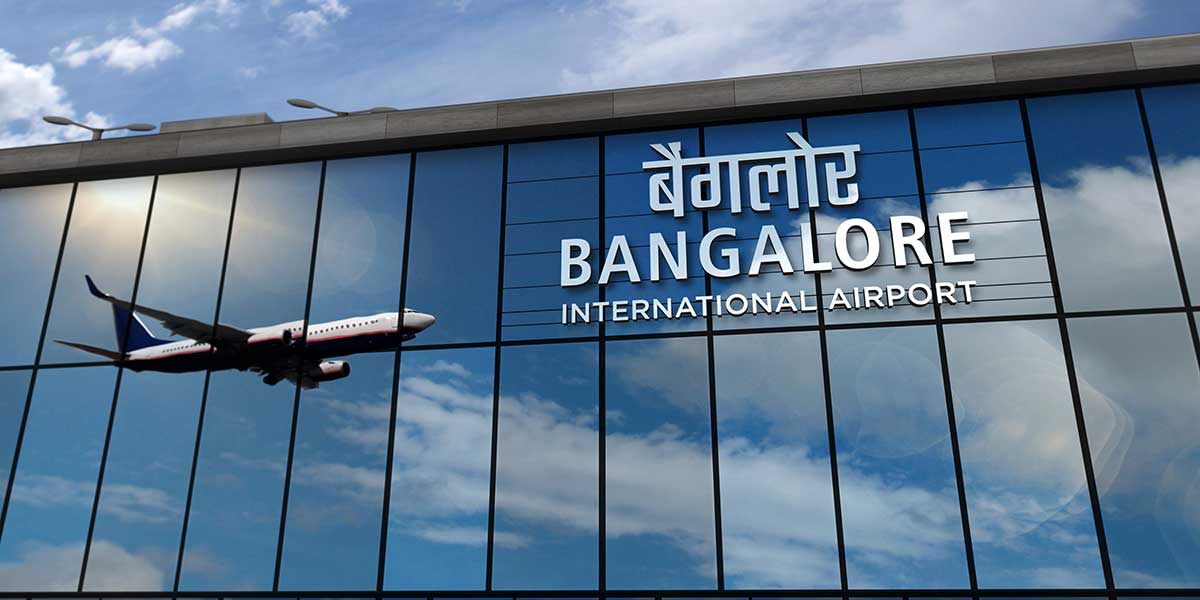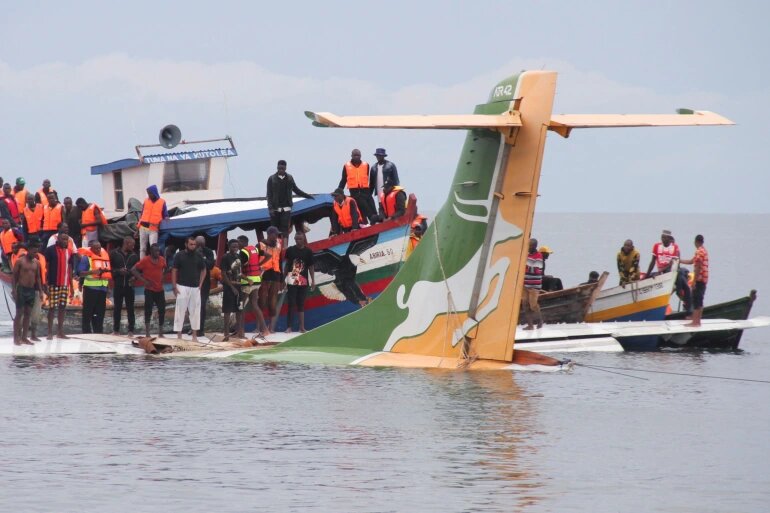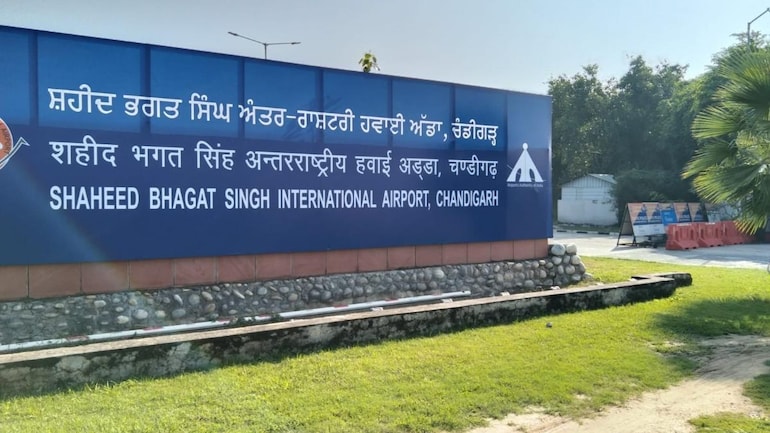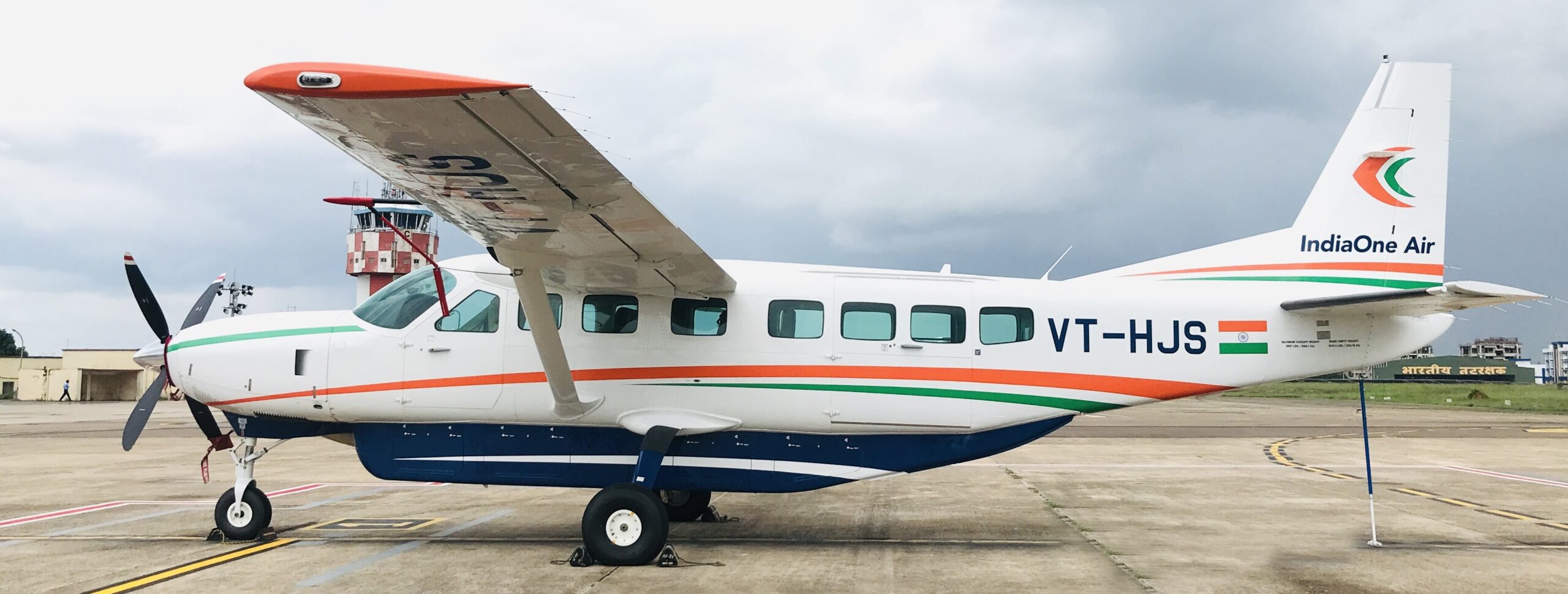Sustainable aviation looks for ways to lessen the negative effects that flying has on both society and the environment. Through innovative new techniques, it seeks to lessen aviation's impact on climate change. This area of expertise focuses on energy-efficient flight operations, cutting-edge propulsion systems, environmentally friendly aircraft technology, and highly effective aircraft designs.
Airbus ZEROe Project | Representative | Airbus
A paradigm shift in the aviation sector was signaled by the International Aviation Climate Ambition Coalition's first meeting at COP26 in Glasgow and the announcement of net zero global emissions targets by the International Air Transport Association (IATA) and the Airport Council International (ACI).
The aviation sector today is in an ironic situation. On the one hand, it connects individuals, locations, economies, and cultures. Additionally, it is essential for transporting supplies around the world, such as vaccines during the most recent global pandemic, and delivering humanitarian help to areas that need it most.
On the other side, aviation contributes significantly to climate change, making up between 2 and 3% of global carbon emissions. If significant adjustments aren't done, this percentage might rise to over 20% by 2050. The entire climate impact of the aviation industry can be up to three times greater than that of carbon emissions alone due to other, non-CO2 related consequences of air travel, such as contrail cirrus created by soot particles.
The World Aviation Festival, which was held this year in Amsterdam, focused heavily on the duty of industry leaders and stakeholders to address these issues. Three new realities were highlighted:
1. The urgent message
In favor of pursuing actual aircraft emissions reductions, EasyJet has chosen to discontinue its carbon offsetting program. The airline focuses on technologies such sustainable aviation fuel, hydrogen power, and carbon capture while testing its processes within the Science-Based Targets project in order to reduce CO2 emissions by 35% per passenger kilometer by 2035 and reach net zero by 2050.
With KLM introducing a portion of sustainable aviation fuel to all flights departing from Amsterdam and Lufthansa forming new agreements to use and promote sustainable fuels, both airlines have jumped on board. In addition, Lufthansa has added AeroSHARK film, a biomimetic technology that lowers drag, conserves fuel, and illustrates the innovation principle in action, to its fleet of Boeing 777F freighters.
Lufthansa Technik
Singapore Airlines has implemented new SITA technology and switched to sustainable aviation fuel in an effort to cut emissions by 15,000 tons yearly.
With the BA Better World pledge, which includes investment and advocacy around the considerate use of resources, the development of sustainable aviation fuel, and waste reduction measures, British Airways is on what it considers its "most important trip yet."
2. Cooperation and transparency are key
Airlines have access to a growing array of technologies for reducing emissions, from sustainable fuels to flight operations software.
It is impossible to exaggerate the value of collaboration given the immense complexity of the aviation value chains. For instance, the adoption of hydrogen-powered aircraft must coexist with major infrastructural modifications that will have an impact on a large portion of the aviation supply chain. Likewise, increasing the use of sustainable aviation fuel calls for international cooperation to create and control standards for raw materials, manufacturing techniques, and calculations of emissions reduction.
3. Sustainable Aviation Fuel- next name of the game
Because it may produce immediate emissions reductions, SAF is an essential component of the climate action puzzle. Long-term adoption of alternative solutions, like electrification and hydrogen power, will also be important, but full-scale implementation is still years, if not decades, away.
Representative | ADS Group
An important year for sustainable aviation fuel (SAF), 2022 saw more SAF offtake agreements announced than in the previous two years put together, making it by far the most significant year to date. Over three dozen airlines have signed up for upwards of 80 SAF offtake agreements, totaling a commitment of approximately 3.5 trillion liters of SAF, according to ICAO.
Key producers of SAF
The obvious advantages of SAF are well known, but meeting the increasing demand for SAF will be the main problem. Neste, the top supplier of sustainable aviation fuel, is well cognizant of this. Neste began producing SAF in 2011 and can already produce 100.000 tons of it annually.
Representative | ecac-ceac
There is also a rush of new players entering the renewable fuel industry alongside well-established providers like Neste, and more and more airlines are committing to utilizing SAF.
As an example, the IAG airlines have actively promoted the use of SAF in their respective markets. The first transatlantic flight powered by 35% SAF was carried by British Airways last year.
Regulation and collaboration are crucial
The use of sustainable fuels by airlines is being expedited by the necessity for strict regulation and regulations.
To decarbonize the aviation sector, urgent adoption of technologies like SAF, ambitious cooperation across value chains, and meaningful action right now are all essential. Additionally, global agreement on the best ways to encourage and measure emissions reductions would be required.
2022 United Nations Climate Change Conference
Wikipedia
The 27th United Nations Climate Change Conference is being in Sharm El Sheikh, Egypt, from November 6 through November 18, 2022. It is more widely known as Conference of the Parties of the UNFCCC, or COP27.
SOURCE : NESTE | JOURNEYTOZEROSTORIES.NESTE
COVER: Marshall Skills Academy
Read next
Kempegowda Airport is back to pre-covid passenger levels due to the high traffic volumes
Sakshi Jain
08 Nov 2022

The Bangalore International Airport Limited (BIAL) announced that Kempegowda Airport (KIA) is back to pre-COVID-19 passenger levels due to the high traffic volumes observed in the current fiscal year (FY) 2023 up until October 26.
According to BIAL, compared to October 2019, passenger traffic volumes increased by over 102% for domestic travel and by nearly 85% for international travel. From the beginning of the current fiscal year to the last week of October, the airport welcomed 16.30 million passengers, compared to 6.61 million at the same time the previous year.
ALSO READ - Flight operations at Kempegowda International Airport return to normal
“The aviation market witnessed a robust demand in the last six months, and this has impacted the passenger volumes positively. Air travel had taken a significant hit due to the pandemic, but it is recovering now, and we have observed growth in recent months. We are very optimistic that this upward trend will continue over the next few quarters.”
Satyaki Raghunath, Chief Strategy and Development Officer, BIAL
Traffic resurgence persisted in both the domestic and international sectors.
With the Deepavali weekend on October 21, the start of the holiday and festive season, 94,330 travellers passed through the airport. The Kempegowda International Airport in Bengaluru saw a lot of people in the days before Diwali. Thousands of passengers were seen lining up at 3 am with their bags to board flights. In a video that went viral, the airport did really resemble a crowded shopping mall
Kempegowda International Airport in Bangalore records a 5-fold rise in global travellers
The frequency of flights to domestic locations has increased, improving connectivity to Tier II and III cities. As a result, from April to September 2022, transfer travel accounted for 14% of all airport traffic, while non-metro traffic climbed to 58% of all airport traffic.
International airlines like Qantas and Cathay Pacific started flying to and from the airport, and these launches also increased the number of passengers in the international sectors. With more airlines adding extra capacity and resuming service to and from the airport, growth in the international segment is anticipated to expand.
While Ethiopian, Malindo Air, and Air Asia have restored regular passenger service, Emirates, Air France, KLM, Japan Airlines, and Kuwait Airways have increased their operations. One of the main reasons Emirates deployed an A380 to the airport was cited as the increased demand.
ALSO READ – Bengaluru Airport Named Best Regional Airport in India and South Asia
The world’s largest passenger aircraft Airbus A380 touches down at Bangalore Airport
The arrival of Emirates flight EK562's Airbus A380 was witnessed by a large crowd of enthusiastic aviation fans at Bengaluru's Kempegowda International Airport (BLR) at 15:27 local time on October 14. Emirates ran a single Airbus A380 flight to BLR, before starting the service formally on October 30.
In FY23, 118,852 ATMs were recovered during Air Traffic Movements (ATM) at the airport. Domestic ATMs stood at 1,05,354, while International ATMs stood at 13,498.
According to BIAL, the airport has made a name for itself as the principal South Indian transfer gateway. The main domestic routes in FY 2023 up to this point have been Delhi, Mumbai, Kolkata, Cochin, and Pune, accounting for 44% of all traffic, while the top international routes have been Dubai, Doha, Singapore, Frankfurt, and Male, making up 54% of all international traffic.
ALSO READ – Bangalore International Airport surpasses 250 million passenger count
Read next
Tanzanian commercial flight crash-landed in Lake Victoria killing 19 people
Radhika Bansal
07 Nov 2022

A Tanzanian commercial flight operated by Precision Air crash-landed in bad weather in Lake Victoria on Sunday, November 6, killing 19 people.
The airport has been closed until further notice. The plane was flying from Dar es Salaam to Bukoba via Mwanza.
The country’s Prime Minister, Kassim Majaliwa, said officials believe all bodies have been recovered from the airplane. “We’re starting to pull out the luggage and personal items from the aircraft. A team of doctors and security agencies have started the process of identifying the dead and notifying the families,” Majaliwa said.
The airline confirmed the death toll and amended the number of survivors down to 24 in an updated statement on Sunday evening. Earlier, the carrier as well as local officials had said that 26 of the 43 people on board had been rescued.
“Precision Air extends its deepest sympathies to the families and friends of the passenger and crew involved in this tragic incident. The company will strive to provide them with information and whatever assistance they will require in their difficult time,” the airline said. “The names of passengers and crew on board the aircraft will not be released until all next-of-kin have been notified,” it added.
Precision Air identified the aircraft as an ATR42-500. The Franco-Italian manufacturer ATR did not immediately respond to a request for comment.
First introduced almost 40 years ago, the ATR42 is the smaller of two series of short-haul turboprops made by ATR, a joint venture of Airbus and Leonardo. The last fatal accident was in 2017, according to aviation-safety.net, a safety database.
The flight PW494, including 39 passengers and four crew members, had taken off from Tanzania’s commercial capital of Dar es Salaam and was headed to the town of Bukoba before it plunged into Lake Victoria as it was preparing to land.
Video circulating on social media taken by onlookers on the shores of Lake Victoria showed the aircraft submerged in the water with emergency responders coordinating rescue efforts from nearby boats.
Precision Air CEO Patrick Mwanri appeared visibly distressed while speaking to reporters in Dar es Salaam. Mwanri’s voice broke and he had to pause to wipe away tears as he said the plane had departed around 6 AM local and had been expected in the northwestern lakeside town of Bukoba at 8.30 AM.
“But at 8.53 a.m. our Operations Control Center got a report that that aircraft had not arrived,” he said in a televised statement.
The accident is believed to have happened on the final approach to the airport whose runway begins right next to Lake Victoria, Africa’s largest freshwater lake. Local officials suggested bad weather may have played a part in the accident, saying the area had been under heavy rainfall and strong winds at the time.
The regional airline has opened a Crisis Management Center and established information areas in Bukoba and Dar es Salaam to communicate with the families of the passengers.
Social media video showed the plane almost fully submerged with only the green and yellow livery on the aircraft's tail visible above the waterline.
Following news of the crash, Tanzania’s President took to social media to call for calm while rescuers worked at the site of a downed plane.
“I have received with sadness the information of the crash of the Precision Air flight at Lake Victoria, in the Kagera region,” President Samia Suluhu Hassan wrote on Twitter Sunday. “I send my condolences to all those affected by this incident. Let’s continue to be calm as the rescue operation continues and we pray to God to help us.”
Precision Air is a Tanzanian airline based out of Dar es Salaam. Precision Air, which is partly owned by Kenya Airways, was founded in 1993 and operates domestic and regional flights as well as private charters to popular tourist destinations such as the Serengeti National Park and the Zanzibar archipelago.
Read next
The Chandigarh International Airport will be renamed Shaheed Bhagat Singh International Airport, according to a notice from the Ministry of Civil Aviation (MoCA). PM Modi announced the renaming on September 25 and said it would be done in commemoration of the freedom fighter.
On September 28, they honoured the freedom fighter's 115th birthday. The Chandigarh airport's renaming to honour Bhagat Singh was announced on the same day.
In a statement dated November 2:
“It is notified that the Chandigarh International Airport in Chandigarh is named as 'Shaheed Bhagat Singh International Airport, Chandigarh' with immediate effect.”
-MoCA (Ministry of Civil Aviation)
ALSO READ - Chandigarh airport officially named after Shaheed Bhagat Singh
The Punjab and Haryana governments both own 24.5 per cent of the Chandigarh Airport and the rest is owned by the Airports Authority of India. Different names have been suggested by the two state governments.
Haryana wants it to be known as “Shaheed Bhagat Singh International Airport, Chandigarh”, whereas Punjab wants to call it “Shaheed-e-Azam Sardar Bhagat Singh International Airport, Mohali”.
The Chandigarh International Airport will be renamed Shaheed Bhagat Singh International Airport
Haryana CM Khattar and Deputy CM Dushyant Chautala both expressed gratitude to Prime Minister Narendra Modi on September 25, the day he announced the renaming of the Chandigarh airport in his Mann Ki Baat programme.
Following a decade of efforts by various governments, the dispute between Punjab and Haryana over their claims to the airport has finally been resolved with the official naming of the Chandigarh international airport after freedom fighter Bhagat Singh on Wednesday, September 28, the anniversary of his birth.
Airport renaming and naming follow a complex process, and the Union Cabinet has given its final approval.
Typically, airports are identified by the name of the city in which they are found. The convenience of travellers in general, and particularly foreign visitors who are unfamiliar with the local history of the area, was taken into consideration when this decision was made in 2016.
The idea of naming airport terminals after notable people and naming airports after the cities they are located in had gained traction.
The principles and regulations were altered, and names were changed by personalities. In some cases, the state government in question will propose a name, and the relevant state legislative assembly will then approve it by a resolution. For final clearance, the same is then forwarded to the Union Cabinet.
The creation of 21 new greenfield airports across the nation has received "in principle" clearance from the aviation ministry.
India anticipates building up to 80 airports in the next 5 years to accommodate the rising passenger demand, keeping up with the country's consistent growth trend in civil aviation. According to the civil aviation ministry, the nation's airports need to be developed, and the current infrastructure needs to be upgraded to meet the needs of the nation. The new airports in the pipeline are part of that vision.
ALSO READ - Centre has approved the construction of 21 new greenfield airports
The creation of 21 new greenfield airports across the nation has received "in principle" clearance from the aviation ministry. Mopa in Goa, Navi Mumbai, Shirdi, and Sindhudurg in Maharashtra, Kalaburagi, Vijayapura, Hassan, and Shivamogga in Karnataka, Dabra in Madhya Pradesh, Kushinagar and Noida (Jewar), in Uttar Pradesh, and Dholera and Hirasar (Rajkot), in Gujarat, are a few of these.
ALSO READ - Government plans to build 220 airports by 2025 with 80 new ones
The government intends to establish a total of 220 airports by 2030 due to the strong growth potential of the nation's civil aviation sector. Under the regional RCS-UDAN project, many of these airports, helipads, and water aerodromes are slated for development in FY 2022–2023.
Read next
Kratos receives a Multi-Service Advanced Capability Hypersonics Test Bed (MACH-TB) contract from prime partner Dynetics
Prashant-prabhakar
05 Nov 2022

A major provider of National Security Solutions, Kratos Defense & Security Solutions, has been given a subcontract to expand American capability for hypersonic flight testing.
On behalf of the U.S. Department of Defense, the Kratos partner and prime contractor Dynetics received the Multi-Service Advanced Capability Hypersonics Test Bed (MACH-TB) program award from the Naval Surface Warfare Center (NSWC), Crane Division's Strategic and Spectrum Missions Advanced Resilient Trusted Systems (S2MARTS) other transaction authority (DoD).
By utilizing commercial infrastructure and launch vehicle suppliers, the Team will expand the nation's capacity for ground and flight testing of hypersonic technologies and payloads under the terms of the MACH-TB contract by creating an affordable and flexible hypersonic testbed platform.
Representative | Teknonel
The MACH-TB Experimentation project will produce a prototype and proof-of-concept demonstration of a modular Experimental Glide Body (EGB) testing hypersonic technologies/experimental payloads in operational trajectories utilizing existing available boosters. A wide range of U.S. military hypersonics projects, DoD research programs, commercial partners, and academic stakeholders will be able to use the national hypersonic testing capabilities that the MACH-TB program will provide to the DoD.
With the recent acquisition of the Kratos Southern Research Engineering (SRE) business unit as well as decades of demonstrated experience with hypersonic flight testing and launch vehicles within the Kratos Defense & Rocket Support Services (DRSS) Division, MACH-TB will make use of many of Kratos' strengths, products, systems, and solutions.
Kratos’ DRSS Division
Yahoo Finance
A market leader in the development of rockets, ballistic missile defense, suborbital research, hypersonic, and other systems it also has substantial experience with hypersonic flight tests and commercial launch vehicles. By offering flexible, dependable, and reasonably priced launch and fly systems, vehicles, and services at the operational pace and cadence required to meet the DoD's evolving needs, Kratos will support MACH-TB.
At Kratos, affordability is a technology, and we are leading from the front in developing launch vehicle and flight-test technologies for the hypersonics community. A recent example of Kratos internally funded, rapid development leadership is our Zeus family of solid-propellant rocket motors, which will provide an affordable and reliable launch capability to support the MACH-TB program and the DoD in meeting their hypersonic test objectivessaid Dave Carter, President of the KDRSS Division
Kratos specializes in areas where technology advances can have a force multiplier effect.
We are happy to be a part of this incredibly capable and diverse Team tasked with boosting our nation’s capability to conduct responsive and affordable hypersonic testing to more rapidly develop technologies that can be inserted into current and future DoD hypersonic programssaid Michael Johns, Senior Vice President of Kratos SRE
Kratos creates and provides platforms and systems that ensure Warfighters are prepared for the future as threats and technologies develop. These include tactical unmanned aircraft systems (UAVs) that perform at levels far beyond those of conventional aerospace companies while costing less, as well as training systems that incorporate mixed reality to reduce training costs and improve Warfighter readiness.
SOURCE : asdnews | kratosdefense
COVER: asdnews
Read next
IndiaOne, the regional airline started operating commercially on October 31, 2022, as part of the winter schedule 2022. Daily service Bhubaneswar-Jeypore-Visakhapatnam-Jeypore-Bhubaneswar will be provided.
IndiaOne Air, a regional airline that specialises in connecting tier 2 and tier 3 cities, has soft-launched a UDAN (Ude Deshka Aam Nagrik) route from Bhubaneswar to Jeypore. IndiaOne Air is the country's first regularly scheduled airline to fly a single-engine aircraft.
On October 31, 2022, IndiaOne Air flew for the first time between Jeypore and Bhubaneswar (Biju Patnaik International Airport). To commemorate the first scheduled flight into the city, the airline also provided an introductory cost of Rs 999 (for a short time only). IndiaOne Air allowed reservations up until November 9th, 2022, and all available seats were sold out in a short period.
https://twitter.com/IndiaoneA/status/1587004168623226881
The daily scheduled flights will cut the distance between Jeypore town and the state capital of Odisha to 1.5 hours.
Beginning flight operations from Jeypore will increase connectivity, trade, and tourism while also achieving regional residents' objectives. Jeypore Airport received a licence in October, making it the first state-owned airport to do so.
"It was a long-standing demand of the people of this region and we are extremely happy about the announcement. At present, it takes nearly 12 hours to reach Bhubaneswar by road but with the introduction of flight services, the travel time will be reduced to just 1 hour and 45 minutes." Tara Prasad Bahinipati, MLA, Jeypore
Under the UDAN programme, the Odisha State Government, the Ministry of Civil Aviation, the Government of India, and the Airports Authority of India worked together to grant the airport a licence for regularly scheduled commercial flight operations.
Currently, a nine-seater flight will operate and efforts will be made to replace it with a 19-seater plane soon. Regional airline IndiaOne Air is headquartered in Ahmedabad, India. A brand-new aircraft Cessna Grand Caravan will be flown, which is a single-engine aircraft, making it India's first scheduled carrier to do so.
The airline received the AOC on June 24, 2022, after the proving flight was completed on June 22, 2022. IndiaOne Air will offer safe, effective, affordable, and punctual services to connect tier 2 and tier 3 cities with major cities.
A brand-new aircraft Cessna Grand Caravan will be flown by IndiaOne Air
To connect underserved and unserved cities that would otherwise be challenging and time-consuming to reach by road and train, they work to offer both interstate and intrastate scheduled flights beginning in Eastern India.
To promote regional air connectivity and lower the cost of air travel for the general public, the Ministry of Civil Aviation announced the Regional Connectivity Scheme (RCS) Called UDAN on October 21, 2016.
The Implementing Agency, Airports Authority of India (AAI), has so far identified 154 RCS airports under UDAN for the use of RCS flights, including 14 water aerodromes and 36 helipads.
It has allocated 948 routes, of which 405 have been operationalized under UDAN as of March 9, 2022. These routes involve 65 airports, 8 heliports, and 2 water aerodromes.





Comment